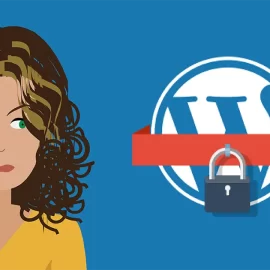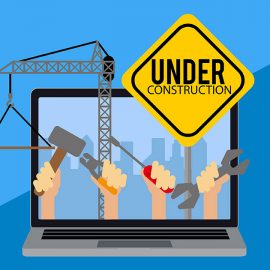Choosing the Perfect Icons for Your Website
Of all the design choices you can possibly run into when designing your website, picking the most suitable icons is one of those that you just take for granted. However, that’s not the right attitude to adopt, since icons are one of the most fundamental ways that website visitors interact with any given website. Therefore, it’s your responsibility to spend a fair amount of time in thinking about your choice of icons during the design phase.
Don’t be fooled that users won’t have a sharp eye for detail when they’re browsing your website. After all, it’s the small things that matter, and when they have to click on something, they’ll constantly be reminded of your icon-choice procedure.
Consider the readability of your icons
As with typography, icons should be readable because users will interact with them. The readability of your icons has to be at the top of your list when choosing them.
In addition, the icons must also be visually appealing because people’s eyes will be directed there. If you can design them by satisfying these two important components, then your average website visitor will remember them.
The average website visitor’s memory will store two crucial elements: Icons will either be attractive enough to stand out in their memory or ugly enough that they won’t be forgotten soon.
Icons that are readable will be simple, clear and feature well-defined edges and borders. Colourwise, they should not be too loud, but still have bold and vibrant colours.
Icons ought to be universal
The icon design on your website should be universally understood by ordinary folks. This means you shouldn’t use something as complicated and on-the-way-out. You definitely want to avoid using something like a gear or wrench icon to represent anything other than settings or a link menu. Many web users associate gears or wrenches with such menus, so don’t confuse them. Since the universal use of a gear or wrench icon is for settings or a link menu, then don’t go against website visitors’ expectations.
Since you’re involved with images and their associated symbolism and interpretations, the image you select as an icon for a specific purpose has to make sense. Even the most uninformed web user should know what an icon stands for just by looking at it.
Consistency is always nice
Human beings like consistency since they are creatures of habit. Something unexpected and inconsistent will produce confused and disagreeable feelings in people, so why take this risk when designing icons for your website?
The user experience should be consistent for the website visitor, and one way to help ensure this is by the consistent use of your icons. Icon consistency will help to ensure a solid flow in the information that you present through your icons.
A smart place to start is the incorporation of the same colour scheme. If your colour scheme is consistent from page to page, it will create a reputation of stability for your whole website. Not to mention, your icons will gain a reputation for being stable, as well. The result of this is that website visitors will be more likely to remember your website.
It’s also highly recommended that you use the same shapes for the icons on your website. Incorporating consistent shapes is another ideal way of getting your website into the memory retention of your visitors.
As a last nod to consistency, be sure to design any and all website icons without the presence of borders. Borders, gradients and shadows can all negatively impact the aesthetic, as well as technical element of your icons.
Functionality should be a priority
Last but not least, the functionality of your icons is something to consider too. If your icons are all aesthetic and not functional, then the user experience will suffer, thus turning off website visitors. Just remember that the quality of your icons must not defeat their original purpose.
There’s always a temptation to add superfluous fanciness to a design by incorporating excessive icons. Don’t fall into this trap. Instead, just add the icons that your website needs. Don’t overdo it and stay disciplined by remembering that less is more, literally.
Avoid creating a visually heavy and overloaded look on your website by adding too many icons.
Icons can make or break your website
Icons can make or break your website and this is certainly no exaggeration. Icons are taken for granted by some people, even designers, but it’s a serious mistake if you succumb to this prejudice.
Icons are essential for website navigation and the user experience, so why wouldn’t you want to spend extra time and thought in making sure you design them perfectly?
The last thing you want is to attract undesirable attention from website visitors who think your icons are so ugly that they remember that more than anything else on the website.
Just keep the above tips in mind and your icon-designing days will be filled with success and great results.
SOURCE: Web Design Library
Need a professional looking website?


![[VIDEO] The Art of Web Design [VIDEO] The Art of Web Design](https://www.rimidesigns.com.au/WPsite/wp-content/uploads/2021/01/Rimidesigns-The-Art-Of-Web-Design-270x270.jpg)
